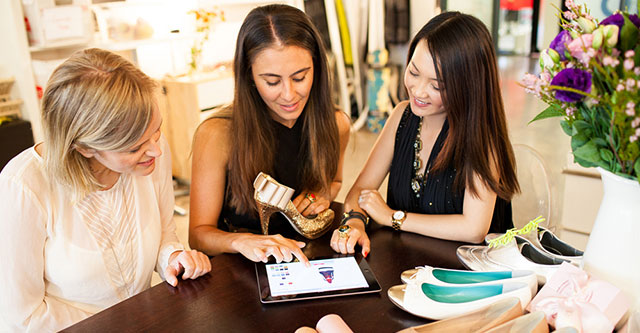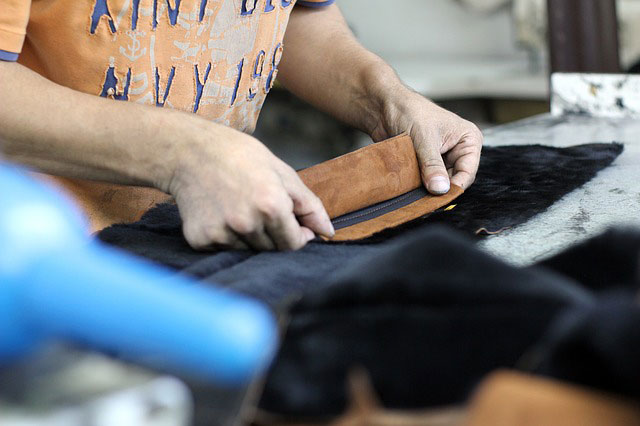The life of an entrepreneur is like a rollercoaster.
At Leaders in Heels, the busiest period is the pre-Christmas season.
Being an expectant mother (after three years of trying to conceive) didn’t hold me back from running my business at full speed. It took me two years to design and manufacture our Phenomenal Woman planners, and I didn’t want to waste another year because you can’t miss the Christmas-New Year window.
I had lists and plans to ensure that my business (and I) would be prepared when my baby’s due date came around. I knew, on paper, what I had to do in the weeks leading up to his birth. And surely it wouldn’t take long to get back to my business once he was born. I mean, I was only a pregnant woman full of hormones, who’d never held a baby in my life. How hard could it be?!
And then my lovely baby boy Jordan decided to surprise me by coming into the world five weeks early. Five whole weeks. Before I’d had time to execute any of my preparations.
So, this is how my first months of maternity leave looked, both in the lead-up to, and during, the busy Christmas period. Thankfully, Jordan loved being carried around while sleeping!

It was difficult juggling both business and baby, especially as first-time mother. Try feeding a squirmy baby while answering emails!
This is exactly what we were doing when an email came from the lovely team at Yarra Trail, inviting me to be part of their ‘Trailblazer’ campaign—a celebration of inspirational Australian women and their stories.
Leaders in Heels started out as a blog that interviewed and celebrated amazing women, so how could I possibly say no?
Yarra Trail: Trailblazing Women
Yarra Trail is a great Australian fashion story in itself that started in Melbourne some twenty-two years ago. It’s grown into a brand that’s sold in David Jones, Myer and around 250 boutiques nationally, across New Zealand and South Africa.
Being able to achieve something like that is also a little dream of mine!
Yarra Trail is known for their effortlessly modern, relaxed look for everyday wear. The outfits are perfect for the weekend or even midweek – if you work for yourself or are lucky enough to be in a cool office with a relaxed dress code.
But beyond the fresh looks and independent vibe, the thing I love most about Yarra Trail is its celebration of women. Now in its fourth series, Trailblazing Women campaign highlights remarkable women across Australia who’ve blazed their own trail, inspiring scores of other women to consider their own future without any limits.
“But beyond the fresh looks and independent vibe, the thing I love most about Yarra Trail is its celebration of women.
I am humbled to be included as part of that group. I, like many others, rarely look at my own achievements, focusing instead on daily priorities and to-dos. It’s part of why I created in Leaders in Heels—to remind women that they are amazing and give them the confidence to create the life they want.
I was invited by Yarra Trail to be part of photoshoot in Melbourne. It was a super fun day of hair, make-up, fashion and thought-provoking interviews. As I sat down to talk about my story, it made me pause and look back at my journey – my inspiration, my childhood, my business, my family – everything that’s shaped me into who I am today.
Over the next few weeks, I’ll be sharing more of my story, along with some of my favourite outfits from Yarra Trail’s winter 2018 collection ‘Rich Tapestry’. Everything’s designed in Melbourne and inspired by the rich, warm tones of Australia’s seasonal landscape. I love it!

Here, I’m metaphorically and literally breaking through while wearing the Dove Blossom Print Jacket ($149), White Crew Neck Tee ($49.95), and Aster Coloured Jean ($99.95).
Leaders in Heels
If you’ve stumbled on this site for the first time, I’m the founder of Leaders in Heels. I design inspirational stationery to help women develop habits of successful leaders, and encourage them to go after their dreams and make their mark on the world.
“I design inspirational stationery to help women develop habits of successful leaders, and encourage them to go after their dreams and make their mark on the world.
I was born and raised in Poland, and moved to Australia in 2008. These days, I work from my home studio in Balmain in Sydney, together with my husband Nino and two other team members. We recently welcomed a new member to the team, my baby boy Jordan Valentine. And our cute corgi, Happy is our Head of Security!
We’re a small team, but we’ve sold over 30,000 books! I’ve shipped to countries all over the world, and also to employees from companies like Google, BHP, Coca-Cola, PWC and American Express.
Leaders in Heels has grown so much from the small blog I started six years ago, and it’s all thanks to the support of our amazing online community of women that we’re still here today.

My “I’m going places and I’m going in style!” pose wearing the Multi Spot Print Shirt ($99.95) & Aster Coloured Jean ($99.95).
Why Kasia Gospos?
If you pictured the kind of person who would start an online mag or create an inspirational stationery brand, I don’t think you’d imagine an accountant for whom English is a second language. But those are little things when it comes to passion and a burning desire to pursue it.
“An education is the most valuable possession – no one can ever take it away from you”
My desire to nurture, inspire and empower women comes from my mum, who strongly shaped my views on the power of women. The story starts well before I was born. When Poland was still a communist nation in the seventies, every citizen had a job guarantee and everyone was paid the same no matter their experience or commitment. So, when my mum decided to go to university instead of working to earn money, everyone laughed.
Fast-forward to the nineties when I was 13, my dad passed away. My mum suddenly became a single mum and a widow, and had to support both myself and my brother. Communism was a thing of the past and thanks to her foresight, my mum was well-educated and working in a senior position in a large company—most likely managing those who laughed at her before!
From her example, I learned that an education is the most valuable possession, as no one can ever take it away from you. I also learned how important it is to achieve independence, because no man or government is a reliable financial plan. These beliefs strongly shaped the decisions I made later in life that led me to where I am today.
“I learned how important it is to achieve independence, because no man or government is a reliable financial plan.”
Why Leaders in Heels?
Leaders in Heels started in 2011 a humble blog with one contributor—me! The idea for the blog came from women sharing their stories with me and various observations I made when working with and seeing other women in the workplace.
Growing up and having my first corporate job in Poland was where I learned the role of a woman in a society and workplace—in Polish society, to be exact. When I first came to Australia, I worked in the mining industry doing the exact same job (management accountant) but the culture was different. One of my female colleagues told me she was disappointed that she’d been overlooked for a vacant role. After talking to her, I discovered that she’d never told the boss she was interested in the role—she thought he would see her hard work and promote her. It surprised me that she never asked, as mum always told me to be nice and then ask for what I want.
“Mum always told me to be nice, and then ask for what I want.”
It is hard to say if the differences were cultural (different country, different religion) or behavioural, but I realised that some women didn’t like to put themselves forward while others did. It made me wonder why certain women were more successful than others, and what I could learn from them.
That’s where the idea of the blog came from. I wanted to learn from successful women and share their experiences with other women. I also had my own sneaky agenda to improve my English and ultimately build a network of opportunities to succeed in a corporate field in Australia.

Here I am doing my “I am woman. What’s your superpower?” pose wearing the Cinders Gradient Spot Tee ($69.95) & Ink Pull On Jean ($99.95).
Why stationery?
Leaders in Heels’ mission is, and always will be, to create more female leaders. To nurture, inspire and empower women.
With the internet, we’re faced with content overload. There’s so much out there about every topic you can think of! Creating more content felt like adding more sand to already full sandpit. It’s great, it’s useful, but it’s not making a huge difference. And I wanted to make a difference.
I wanted to find a way to influence women’s lives on a daily basis and help them become better leaders through creating new skills and new habits.
According to Phillippa Lally, a health psychology researcher at University College London, it takes more than two months before a new behaviour becomes automatic—66 days to be exact.
“It takes more than two months before a new behaviour becomes automatic—66 days to be exact.”
I realised that stationery is something women use on a daily basis, so why not make it a tool to help them develop the habits of successful leaders? I wanted the stationery to share inspirational quotes, challenge them, and become part of their daily routine.
I launched the first stationery line, Make Your Mark, through a crowdfunding campaign and based it around the Leaders in Heels manifesto. Our manifesto contains six key traits of successful leaders: passion, creativity, innovation, confidence, determination and kindness. I didn’t even know that the first product was a beginning to something bigger; that I was blazing my own trail.
“I didn’t even know that the first product was a beginning to something bigger; that I was blazing my own trail.”
It makes me so happy to see our products being used as self-development tools. They’re also purchased as gifts by managers, coaches, parents, schools and universities.

YOU GOT THIS! I am wearing the Multi Stripe Jumper ($89.95), Aster Pocket Detail Vest ($139.00) & Ink Pull On Jean ($99.95).
Further down the trail
I want to provide more tools and build an even bigger community where women can be inspired and empowered to take charge of their own lives, whether in the boardroom or outside of it. I’d love to see more women in leadership positions, and doing what they love. Leadership is not just about work. Being a leader means following your own trail and inspiring others, and therefore can mean anything from pursuing your passion, raising a child, or running a business. I hope that Leaders in Heels will be a positive platform for change.
My grand vision for Leaders in Heels is to grow it into an international stationery brand with brick-and-mortar stores all over the world so I can inspire even more girls and women!
To shop the look, head to yarratrail.com.au or in-store at Myer, David Jones and boutiques nationally. You can find your local stockists right here.
To read my full interview with Yarra Trail and see more videos visit Yarra Trail Traiblazers’ Campaign.









